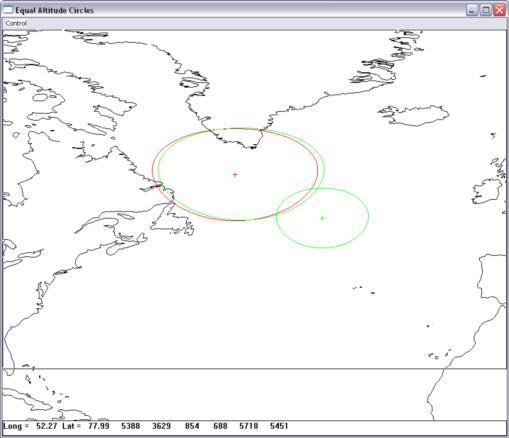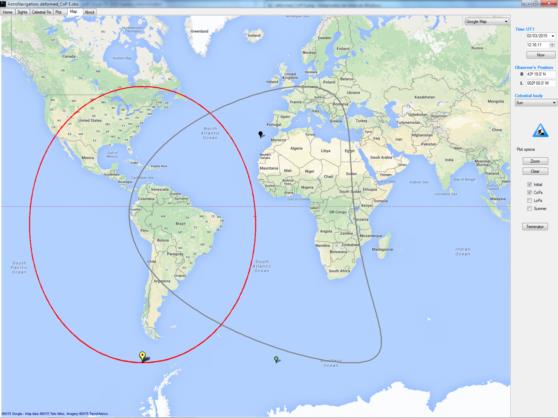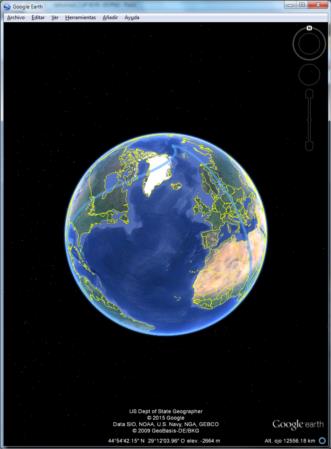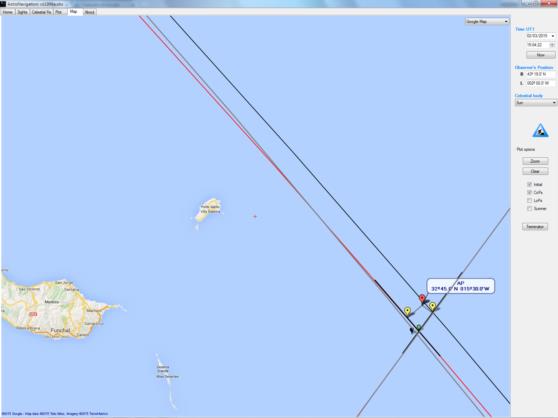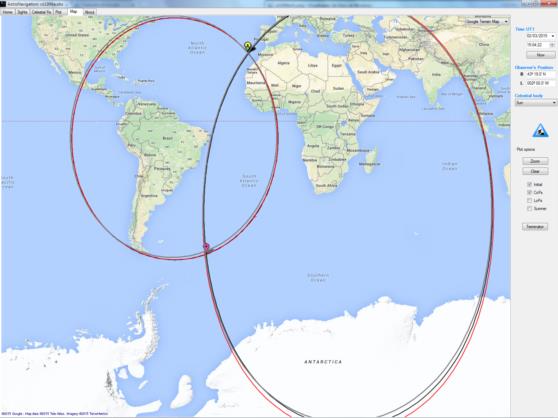
NavList:
A Community Devoted to the Preservation and Practice of Celestial Navigation and Other Methods of Traditional Wayfinding
From: Andrés Ruiz
Date: 2015 Mar 2, 15:38 +0100
Although I pointed in the past to the fact that a CoP was deformed when advanced or moved. The first time I saw a plot of an extreme case was when Robin send us his plots.
Two papers are important about running fix:
· Kaplan, G. H. (1996). The Motion of the Observer in Celestial Navigation, Navigator's Newsletter, Issue 51 (Spring 1996), pp. 10-14.
· Metcalf, T. R. Advancing Celestial Circles of Position, NAVIGATION, Vol. 38, No. 3, Fall 1991, pp 285-288.
And if the CoP was deformed, why the methods on these papers are important?
Because they give an equivalent CoP that permit to calculate the fix. This "virtual" CoP in the neighbourhood of the solution permit such a calculation, the process is iterative; one needs the position (or the azimuth, that depend in position), to calculate the new GP(GHA, dec).
Plots:
N course (in grey the deformed CoP)
Robin´s example with E course:
Example of running fix:
black: initial CoP, grey: deformed, red: CoP adjusted for Ho
Fix ... and the MSH LoP is tangent to the "virtual" CoP in the neighbourhood of the fix.
Linking this issue with the topic "Fix without DR", for two simultaneous sights, DR, or EP/AP is not necessary. But for a Running Fix, the fix, (in general there are two solutions for the intersection of 2 CoPs), depends on the AP you choose, because the CoP is deformed. If the observations are greater than two, only one solution is possible.
Under the issue "An erroneous proposal to allow for travel of an observer between two celestial altitude observations" in NavList there are a lot of information. Recovering the plots for that case: in red initial CoP at t1 and in green CoPs at t2.
Very interesting indeed, ...,other points of view
Best regards
